25/26th May 1943




RAF Elvington was an RAF station which operated from the early 1940s until 1992.
It began as a grass airfield but was rebuilt with three hardened runways replacing the grass, and re-opened in October 1942 as the station for 77 Squadron RAF. It was from Elvington that Halifax JB837 KN-D took off on its final flight on the evening of 25th May 1943.
When 77 Squadron left for RAF Full Sutton it was replaced by two French Squadrons, 346 Guyenne and 347 Tunisie and was the only airfield in the UK used by what remained of the Free French Forces. The French squadrons moved to Bordeaux in October 1945 to become the basis of the air force of the newly liberated French.
After the war the airfield was transferred to No. 40 Group RAF under the control of RAF Maintenance Command. Between 1952 and 1958, the United States Air Force (USAF) extended the main runway westwards beyond the original perimeter and built a 49 acre hardstanding apron (seen behind the words SITE 1 in the image below) with the intention of operating a Strategic Air Command dispersal airfield (part of the Strategic Nuclear forces), but the site never became operational.
The airfield is currently the home to the Yorkshire Air Museum which includes among its exhibits one of only two surviving complete Halifax bombers in the world.
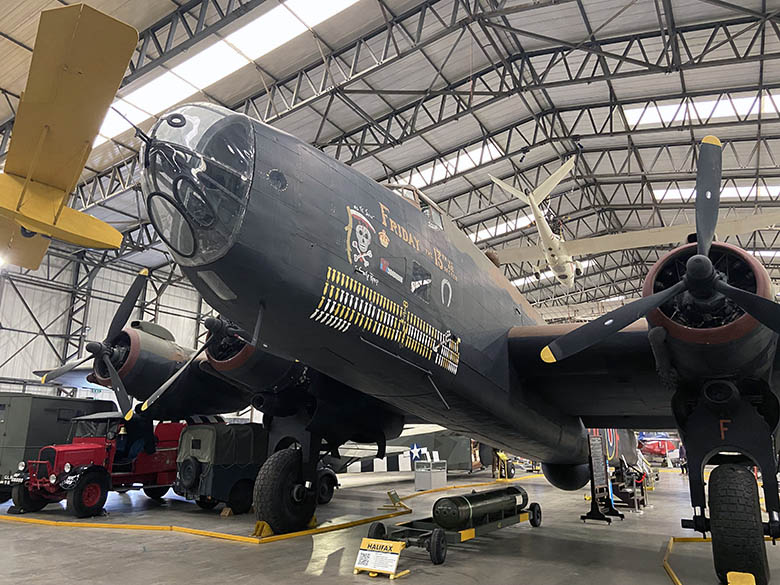
Wartime Elvington
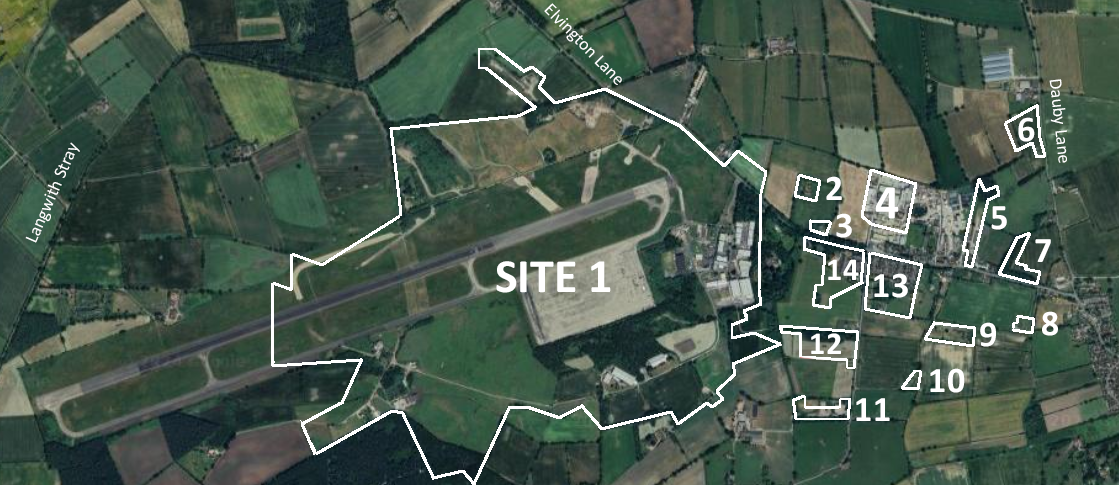
In wartime, Elvington expanded to occupy 14 different sites. It is interesting to note how much of the original airfield still exists, and how the local topography is still influenced by the original layout. Field boundaries still follow the 1940s sites in many cases, and several of the aircraft dispersal hardstands can still be seen or have been repurposed as bases for new buildings. The remains of parts of the two secondary runways can also be seen in the northern part of Site 1.
Site 1
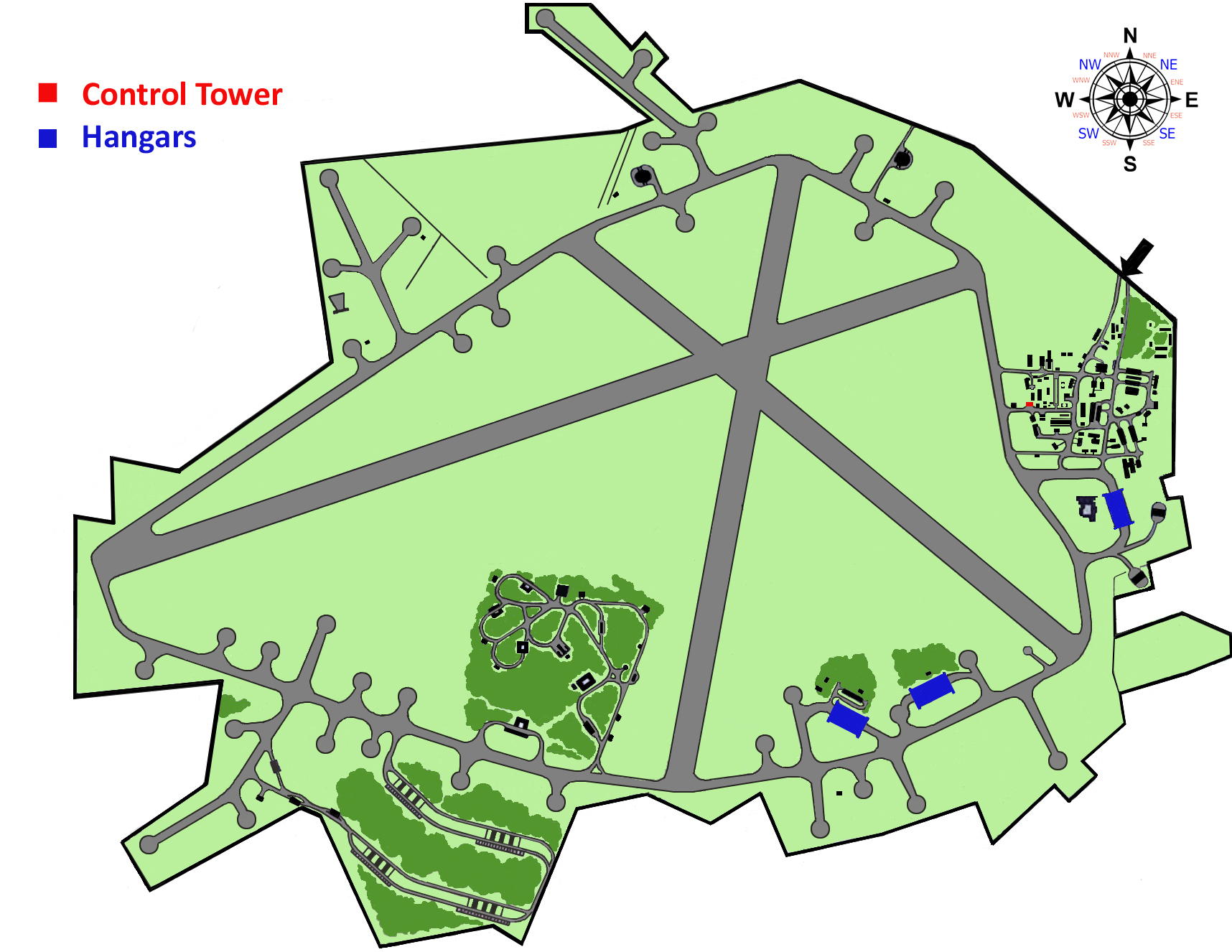
Site 1 was the principal site of the airfield, and was where the aircraft, bombs and fuel were kept. The Bomb Stores and Incendiary Stores were located in Dodsworth Plantation in the south-west of the site, while the Technical Site to the east (just north of Brinkworth Grange which had been requisitioned by the Air Ministry) contained the Squadron Offices, Control Tower and administration buildings.
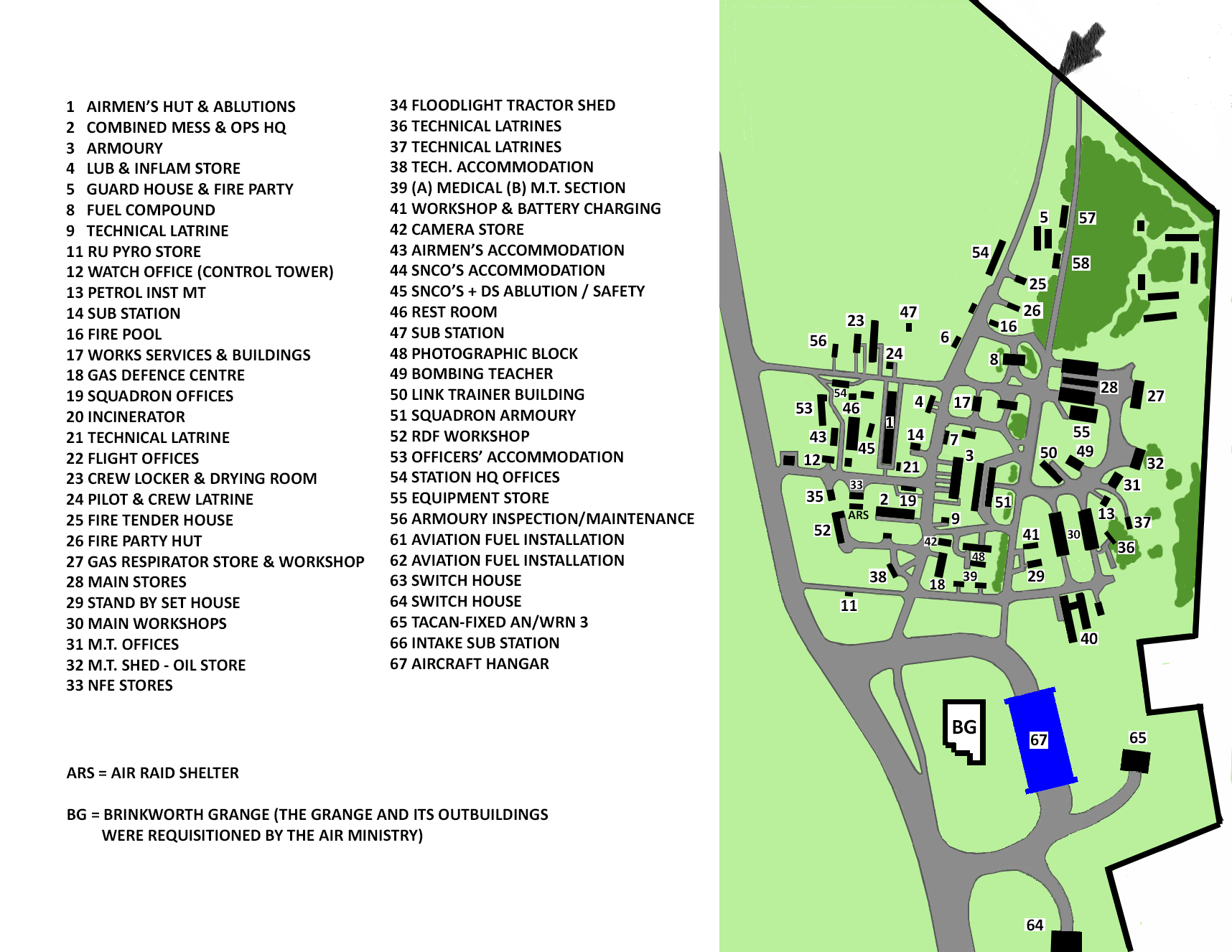
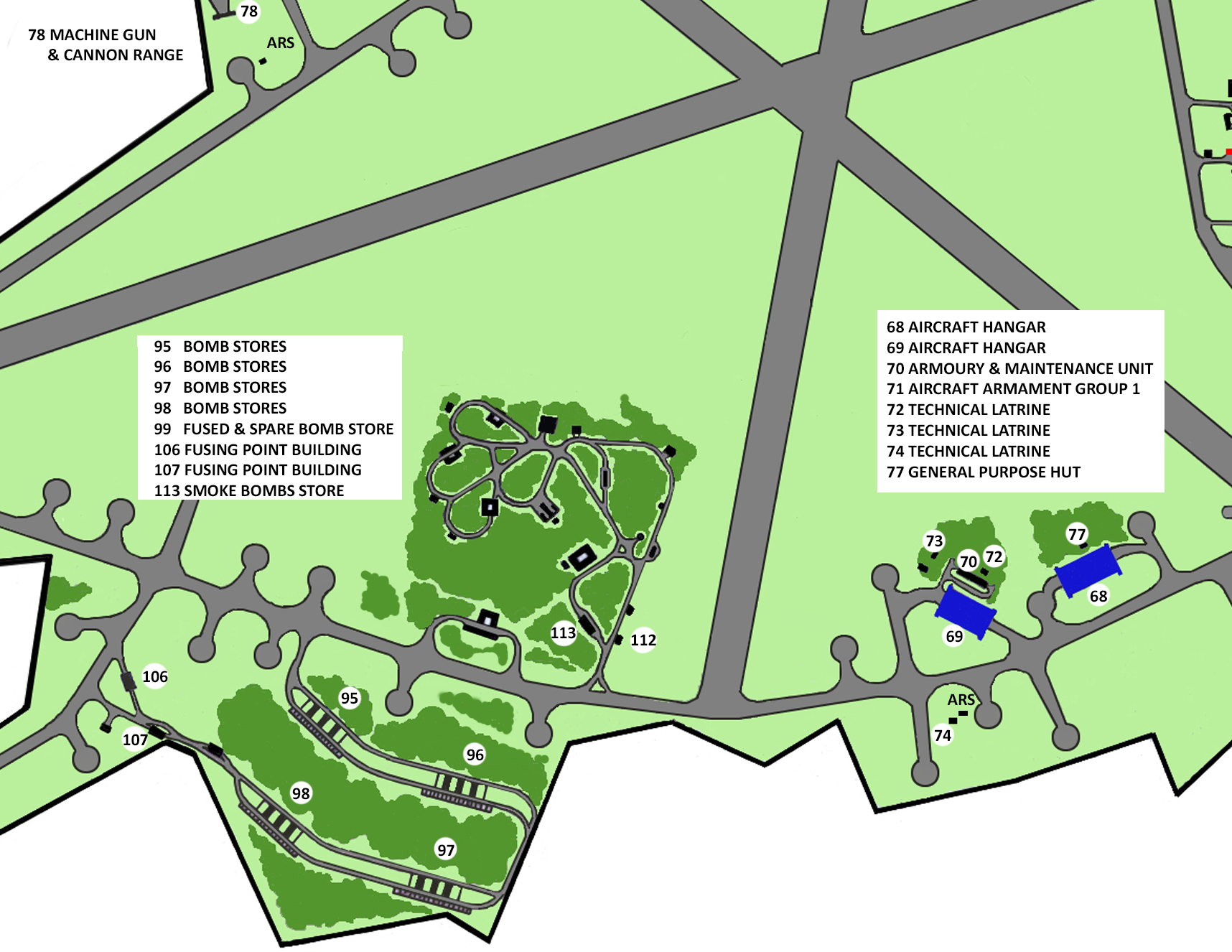
Site 2
Site 2 was guarded by a Picket Post, and contained:
Site 4
Site 4 was principally used for recreation, and contained:
Site 5
Site 5 was principally used for barracks, guarded by a Picket Post, and contained:
Site 6
Site 6 was also principally used for barracks, guarded by a Picket Post, and contained:
Site 7
Site 7 was also principally used for barracks, guarded by a Picket Post, and contained:
Site 8
Site 8 was a small site to the east of the main sites. Guarded by a Picket Post, it contained:
Site 9
Site 9 was also principally used for barracks, guarded by a Picket Post, and contained:
A drawing by Architect David M G Cross dated 28.2.2020 in support of a planning application at this site shows that parts of 2 Shower Blocks, a Water Extraction building (Bore Hole), and the concrete bases of 30 other buildings were still in existence at that time. Remains of an Air Raid Shelter were still visible.
Site 11
Site 11 was also principally used for barracks, guarded by a Picket Post, and contained:
Site 13
Site 13, the second largest site on the airbase, had mixed functions. Guarded by a Picket Post, it contained:
Site 13 even had its own Bowling Alley
Site 14
Site 14 was occupied by the Women's Royal Air Force (WRAF). Guarded by a Picket Post, it contained:
77 Squadron History
This brief history is taken from the 77 Squadron Association website.
Formed initially for the defence of Edinburgh on 1st October 1916, apart from a period on anti-submarine duties with Coastal Command in North Devon in 1941, the squadron was based in the countryside of North Yorkshire from 1938 to May 1945 as part of Bomber Command.
Flying Armstrong Whitworth Whitleys, the squadron carried out the most sorties: 1,909, and lost the most aircraft: 107, with 285 casualties … more than any other squadron. This included a fateful night at Driffield when, with 102 Squadron, 12 aircraft were destroyed and 11 ground staff lost their lives in a Luftwaffe bombing raid. But its worst period was still to come.
In October 1942 the squadron was the first occupant of the newly-built RAF Elvington airbase. Here the crews had to retrain on the Handley Page Halifax. 14 airmen lost their lives in accidents before the squadron resumed operations in February 1943. During the following 18 months they carried out 3,692 sorties, lost 82 aircraft and a further 450 aircrew — more than half the squadron’s total fatalities in the whole war.
77 Squadron consisted of both regulars and volunteers who were supported by hundreds of ground crew and technical staff, both men and women. Amongst the aircrew were young men from Australia, Canada, New Zealand, South Africa and the USA. Operations included leaflet drops (code-named Nickels), mine-laying and petrol runs, as well as bombing raids. 77 handed Elvington over to the French squadrons in May 1944 and moved to Full Sutton.
In 1945 it transferred to Transport Command with Dakotas and then to Mauripur, India, dropping supplies and bringing home prisoners of war from the Far East.
It took part in the Berlin Airlift in 1948/49 ferrying fuel to the citizens of Berlin stranded as a result of the Cold War blockade.
The squadron disbanded on 10th July 1963.